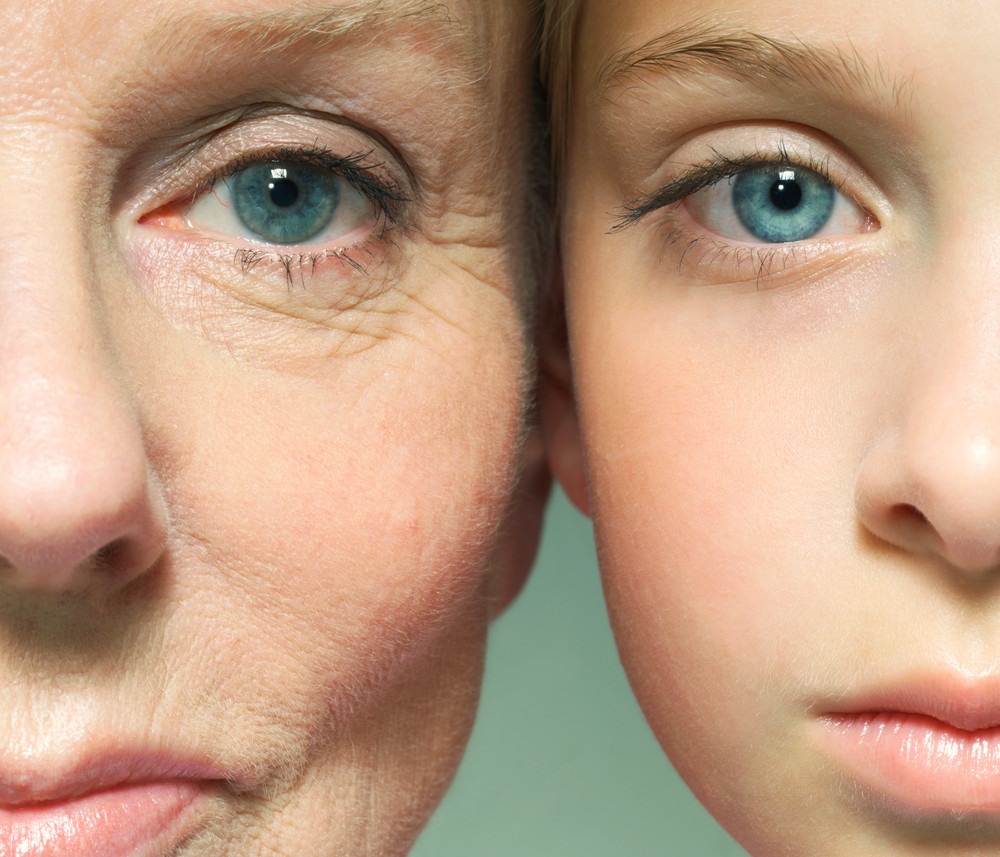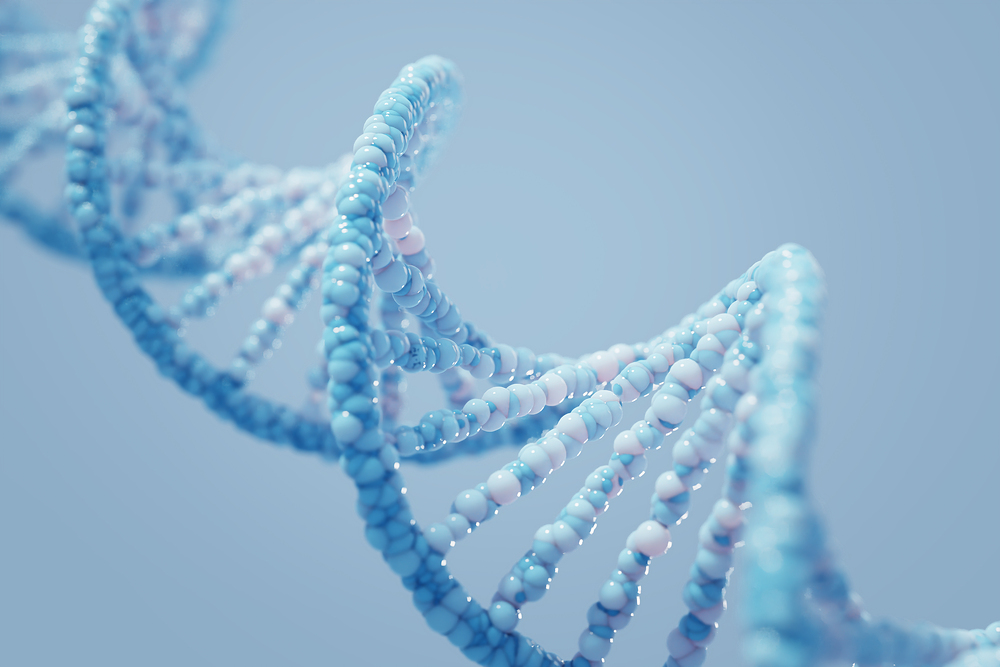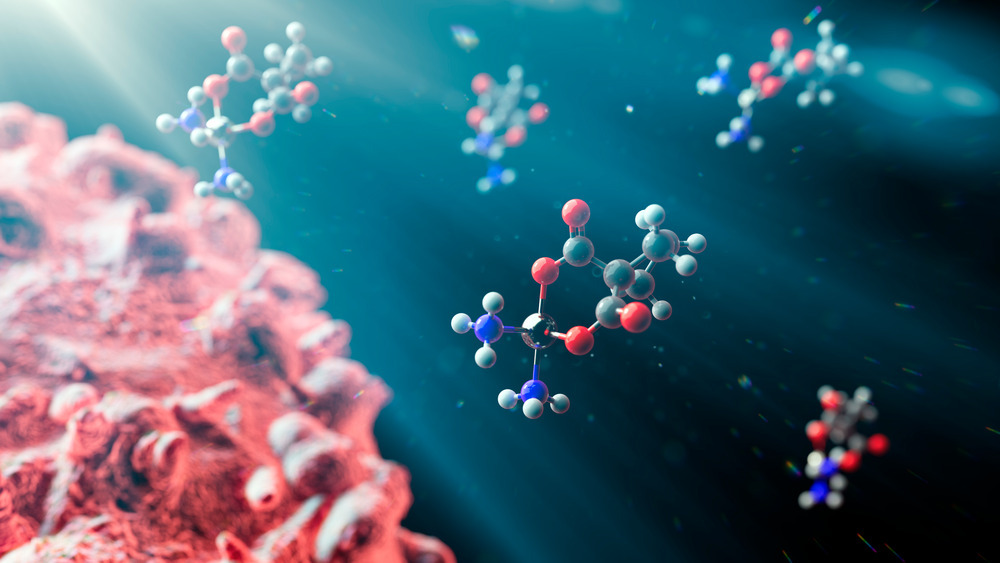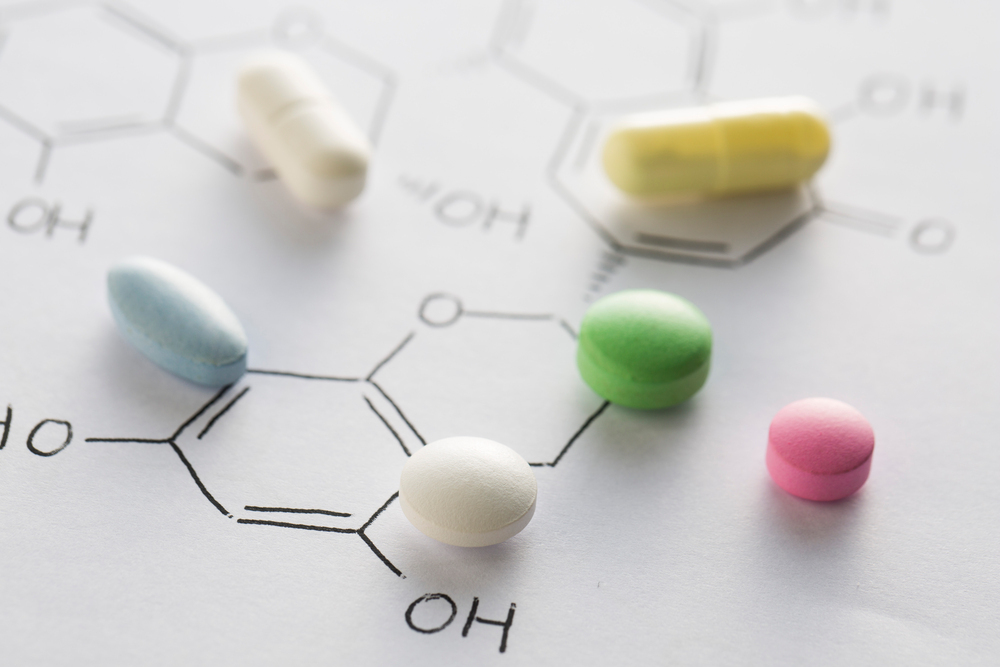
Man's eternal homework, aging
Everyone's worries are different, but I think many of you are basically worried about "getting old and weak." I've also been very interested in aging since I was a child. When I was teaching nutrition at the height of my lectures, the first slide of my lectures was always "The Causes of Aging." What causes aging?
I think there are three main causes of aging. The first is a decrease in the activity of a longevity gene called Sirtuin. When this gene, which plays an important role in health and longevity, is not activated, aging begins and accelerates. The second is free radicals. In fact, moderate free radicals have a net function such as killing bad cells, but when a large amount of free radicals are produced due to overeating, smoking, stress, etc., aging accelerates. The third is a decrease in hormones. When sex hormones such as female and male hormones and growth hormones decrease, it affects aging.

What is the identity of "this substance" that turns on the longevity gene? NMN
Since many of the published age-related studies have mainly dealt with aging caused by free radicals or hormonal changes, various solutions have already been proposed. On the other hand, there is still a lack of research on longevity genes, which play a really important role in aging. However, in the past, studies have shown that resveratrol, the purple pigment in grape skins, activates longevity genes [1]. At the time, this study made resveratrol supplementation a sensation in the United States.
Then, around the year 2000, we began to hear hopeful news related to longevity genes. David Sinclair, a professor of genetics at Harvard University in the U.S., and other scientists who have been studying aging have begun to pay attention to NMN.
More recently, billionaires around the world, including Amazon's Jeff Bezos, Google's Larry Page, and PayPal's founder Peter Thiel, are investing heavily in companies and research related to combating aging. As part of these investments and research results, NMN has been shown to help express dormant longevity genes in the body and help with longevity and delayed aging.
This content is not information about the efficacy or effectiveness of a specific product.

NMN decreases with age
Before we talk about NMM, we need to understand NAD+. NAD+ is a cofactor present in every cell in the body. When we're young, it's high in our bodies, but as we get older, it starts to decline [2]. According to a recently published study, NAD+ concentrations begin to decline as early as the mid-20s and decline at a faster rate with age [3]. As such, when NAD+ levels decrease, markers related to aging, such as the appearance of wrinkles on the skin, worsen.
So, what happens when the concentration of NAD+ in the body increases. Simply put, they age less [4]. The longevity gene surtuin is expressed [5], insulin resistance is improved in sugar metabolism [6], and mitochondria throughout the body secrete more ATP, an energy-carrying substance, making it easier to deliver energy to every corner of the body [7]. It also has a positive effect on heart muscle and blood vessel function, reducing the risk of cardiovascular diseases such as heart failure and high blood pressure. It also helps improve bone health,[8] repairs DNA damaged by free radicals and stress, and helps eliminate bad cells that can become cancerous cells [9][10].
So, if NAD+ is decreasing, shouldn't I supplement it by taking NAD+?" Unfortunately, due to its molecular structure, it is not possible to increase the level of NAD+ in the body by taking NAD+ directly. In addition, even if you supplement with vitamin B3 or tryptophan, which are the sources of NAD+, it is not easy to increase NAD+ levels simply by eating food because these ingredients go through so many metabolic processes and require the help of so many minerals before they are converted into NAD+ in the body [11]. In addition, as we age, the levels of enzymes needed for NAD+ synthesis in the body decrease. To overcome this, after a long period of research, the result is a precursor to NAD+ called NR and NMN. In fact, consuming these precursors increases NAD+ levels.
This content is not information about the efficacy or effectiveness of a specific product.

Why You Should Take NMN
Scientists have not yet concluded which precursor is better, NR or NMN. However, recent studies have shown that NR can only affect NAD+ if it is eventually converted to NMN in the body [12]. To put it simply, NMN converts to NAD+ faster in the body than NR.
In addition, both NR and NMN are absorbed into the blood when ingested, and travel to every part of our body from the brain to the toes, affecting NAD+ throughout the body. Studies have shown that NR drops significantly in concentration when it comes into contact with blood, compared to the amount it is ingested. NMN, on the other hand, remained the same in the blood, showing a much more stable appearance compared to NR [13]. This means that even when consumed in the same amount, NMN stays in our body longer than NR [14].
Professor David Sinclair also prefers NMN to NR. The same goes for me. This is because NMN not only activates longevity genes that are difficult to activate, but also has an antioxidant effect that helps regulate the level of free radicals in the body, making it much simpler, faster, and more effective than NR in delaying aging.

Effect of NMN in animal and human application tests
In fact, I was very happy about NMN because of the recent findings. The fact that NMN provides a variety of benefits for our health has been proven by numerous studies. Here's a look at some of them.
NMN, unlike NR, lengthens telomere length. Telomeres are pieces of DNA that determine the lifespan of a cell and act as a cellular clock. When the ends of these telomeres become shorter, aging begins. A clinical trial published in 2021 in the international journal Frontiers in nutrition reported that when adults between the ages of 45 and 60 were given NMN for 90 days, telomere length increased continuously [15].
The age-delaying effect of NMN has also been proven. In 2023, 80 middle-aged adults who took 300 mg, 600 mg, and 900 mg of NMN for 60 days improved several markers related to aging, according to a study published in GeroScience, a SCIE-level journal specializing in aging [16].
NMN also helps improve insulin sensitivity. A 2011 animal study published in Cell Metabolism reported that insulin sensitivity in the liver was observed to improve when rats with diabetes were given NMN on a regular basis [17], and in 2021, a study was published in Science that showed that overweight or obese prediabetic women who were not diabetic were given NMN at a dose of 250 mg per day to increase insulin sensitivity in their muscles [18].

The surest way to awaken the longevity gene is fasting. Fasting here is not fasting, but eating foods that are low in calories, bad oils, and sugars. The second is proper exercise. Too much exercise can produce too much free radicals and cause cell damage. It is also important to exercise appropriately according to your physical condition. The third is broccoli, which contains NMN, Eat peas, avocados, cabbage [24], grape skins that contain resveratrol, which activates longevity genes, and fisetin in berries. When you're younger, I think that if you put in this much effort, you can maintain your NAD+ levels to some extent.
However, as we age, it is very difficult to maintain NAD+ in the above ways. In fact, when we reach our 50s~60s, our bodies change a lot. So, if you are still tired and tired even though you are making a huge effort for your health, or if you want to be in a better physical condition than you are now, NMN is a good choice.
Howitz, K. T., Bitterman, K. J., Cohen, H. Y., Lamming, D. W., Lavu, S., Wood, J. G., Zipkin, R. E., Chung, P., Kisielewski, A., Zhang, L. L., Scherer, B., & Sinclair, D. A. (2003). Small molecule activators of sirtuins extend Saccharomyces cerevisiae lifespan. Nature, 425(6954), 191–196.
[2] Nadeeshani, H., Li, J., Ying, T., Zhang, B., & Lu, J. (2021). Nicotinamide mononucleotide (NMN) as an anti-aging health product - Promises and safety concerns. Journal of advanced research, 37, 267–278.
[3] Massudi, H., Grant, R., Braidy, N., Guest, J., Farnsworth, B., & Guillemin, G. J. (2012). Age-associated changes in oxidative stress and NAD+ metabolism in human tissue. PloS one, 7(7), e42357.
[4] Yoshino, J., Baur, J. A., & Imai, S. I. (2018). NAD+ Intermediates: The Biology and Therapeutic Potential of NMN and NR. Cell metabolism, 27(3), 513–528.
[5] Zhu, X. H., Lu, M., Lee, B. Y., Ugurbil, K., & Chen, W. (2015). In vivo NAD assay reveals the intracellular NAD contents and redox state in healthy human brain and their age dependences. Proceedings of the National Academy of Sciences of the United States of America, 112(9), 2876–2881.
[6] Braidy, N., Berg, J., Clement, J., Khorshidi, F., Poljak, A., Jayasena, T., Grant, R., & Sachdev, P. (2019). Role of Nicotinamide Adenine Dinucleotide and Related Precursors as Therapeutic Targets for Age-Related Degenerative Diseases: Rationale, Biochemistry, Pharmacokinetics, and Outcomes. Antioxidants & redox signaling, 30(2), 251–294.
[7] Yoshino, J., Mills, K. F., Yoon, M. J., & Imai, S. (2011). Nicotinamide mononucleotide, a key NAD(+) intermediate, treats the pathophysiology of diet- and age-induced diabetes in mice. Cell metabolism, 14(4), 528–536.
[8] Cantó, C., Menzies, K. J., & Auwerx, J. (2015). NAD(+) Metabolism and the Control of Energy Homeostasis: A Balancing Act between Mitochondria and the Nucleus. Cell metabolism, 22(1), 31–53.
[9] Lu, Z., Jiang, L., Lesani, P., Zhang, W., Li, N., Luo, D., Li, Y., Ye, Y., Bian, J., Wang, G., Dunstan, C. R., Jiang, X., & Zreiqat, H. (2023). Nicotinamide Mononucleotide Alleviates Osteoblast Senescence Induction and Promotes Bone Healing in Osteoporotic Mice. The journals of gerontology. Series A, Biological sciences and medical sciences, 78(2), 186–194.
[10] Chalkiadaki, A., & Guarente, L. (2015). The multifaceted functions of sirtuins in cancer. Nature reviews. Cancer, 15(10), 608–624.
[11] Wilk, A., Hayat, F., Cunningham, R., Li, J., Garavaglia, S., Zamani, L., Ferraris, D. M., Sykora, P., Andrews, J., Clark, J., Davis, A., Chaloin, L., Rizzi, M., Migaud, M., & Sobol, R. W. (2020). Extracellular NAD+ enhances PARP-dependent DNA repair capacity independently of CD73 activity. Scientific reports, 10(1), 651.
[12] qbal, T., & Nakagawa, T. (2024). The therapeutic perspective of NAD+ precursors in age-related diseases. Biochemical and biophysical research communications, 702, 149590.
[13] Ratajczak, J., Joffraud, M., Trammell, S. A., Ras, R., Canela, N., Boutant, M., Kulkarni, S. S., Rodrigues, M., Redpath, P., Migaud, M. E., Auwerx, J., Yanes, O., Brenner, C., & Cantó, C. (2016). NRK1 controls nicotinamide mononucleotide and nicotinamide riboside metabolism in mammalian cells. Nature communications, 7, 13103.
[14] Yoshino, J., Baur, J. A., & Imai, S. I. (2018). NAD+ Intermediates: The Biology and Therapeutic Potential of NMN and NR. Cell metabolism, 27(3), 513–528.
[15] Niu, K. M., Bao, T., Gao, L., Ru, M., Li, Y., Jiang, L., Ye, C., Wang, S., & Wu, X. (2021). The Impacts of Short-Term NMN Supplementation on Serum Metabolism, Fecal Microbiota, and Telomere Length in Pre-Aging Phase. Frontiers in nutrition, 8, 756243.
[16] Yi, L., Maier, A. B., Tao, R., Lin, Z., Vaidya, A., Pendse, S., Thasma, S., Andhalkar, N., Avhad, G., & Kumbhar, V. (2023). The efficacy and safety of β-nicotinamide mononucleotide (NMN) supplementation in healthy middle-aged adults: a randomized, multicenter, double-blind, placebo-controlled, parallel-group, dose-dependent clinical trial. GeroScience, 45(1), 29–43.
[17] Yoshino, J., Mills, K. F., Yoon, M. J., & Imai, S. (2011). Nicotinamide mononucleotide, a key NAD(+) intermediate, treats the pathophysiology of diet- and age-induced diabetes in mice. Cell metabolism, 14(4), 528–536.
[18] Yoshino, M., Yoshino, J., Kayser, B. D., Patti, G. J., Franczyk, M. P., Mills, K. F., Sindelar, M., Pietka, T., Patterson, B. W., Imai, S. I., & Klein, S. (2021). Nicotinamide mononucleotide increases muscle insulin sensitivity in prediabetic women. Science (New York, N.Y.), 372(6547), 1224–1229.
[19] Chen, A. C., Martin, A. J., Choy, B., Fernández-Peñas, P., Dalziell, R. A., McKenzie, C. A., Scolyer, R. A., Dhillon, H. M., Vardy, J. L., Kricker, A., St George, G., Chinniah, N., Halliday, G. M., & Damian, D. L. (2015). A Phase 3 Randomized Trial of Nicotinamide for Skin-Cancer Chemoprevention. The New England journal of medicine, 373(17), 1618–1626.
[20] Bertoldo, M. J., Listijono, D. R., Ho, W. J., Riepsamen, A. H., Goss, D. M., Richani, D., Jin, X. L., Mahbub, S., Campbell, J. M., Habibalahi, A., Loh, W. N., Youngson, N. A., Maniam, J., Wong, A. S. A., Selesniemi, K., Bustamante, S., Li, C., Zhao, Y., Marinova, M. B., Kim, L. J., … Wu, L. E. (2020). NAD+ Repletion Rescues Female Fertility during Reproductive Aging. Cell reports, 30(6), 1670–1681.e7.
[21] Yoshino, J., Mills, K. F., Yoon, M. J., & Imai, S. (2011). Nicotinamide mononucleotide, a key NAD(+) intermediate, treats the pathophysiology of diet- and age-induced diabetes in mice. Cell metabolism, 14(4), 528–536.
[22] Hosseini, L., Farokhi-Sisakht, F., Badalzadeh, R., Khabbaz, A., Mahmoudi, J., & Sadigh-Eteghad, S. (2019). Nicotinamide Mononucleotide and Melatonin Alleviate Aging-induced Cognitive Impairment via Modulation of Mitochondrial Function and Apoptosis in the Prefrontal Cortex and Hippocampus. Neuroscience, 423, 29–37.
[23] Yao, Z., Yang, W., Gao, Z., & Jia, P. (2017). Nicotinamide mononucleotide inhibits JNK activation to reverse Alzheimer disease. Neuroscience letters, 647, 133–140.
[24] Mills, K. F., Yoshida, S., Stein, L. R., Grozio, A., Kubota, S., Sasaki, Y., Redpath, P., Migaud, M. E., Apte, R. S., Uchida, K., Yoshino, J., & Imai, S. I. (2016). Long-Term Administration of Nicotinamide Mononucleotide Mitigates Age-Associated Physiological Decline in Mice. Cell metabolism, 24(6), 795–806.



